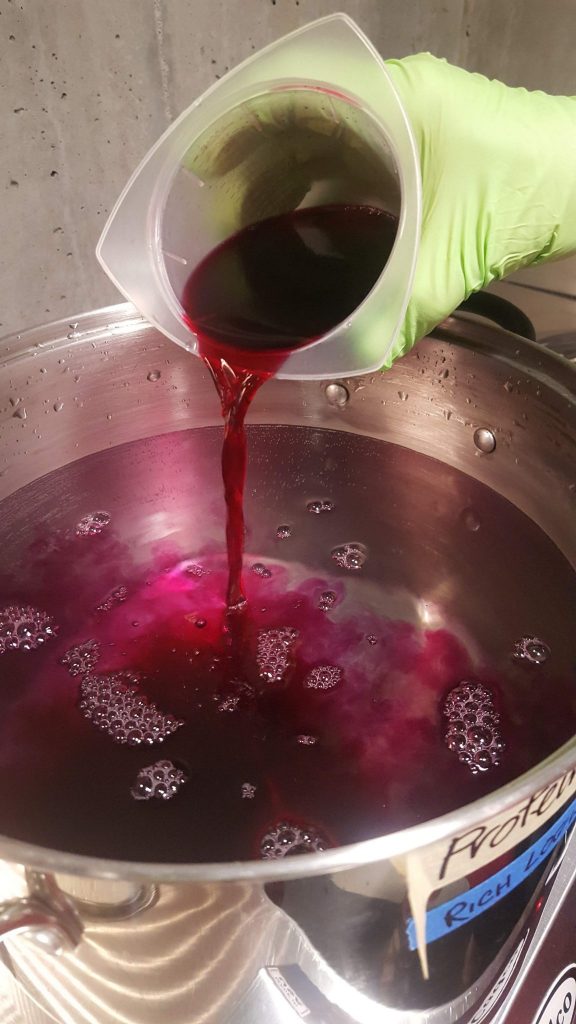
Having been unpleasantly surprised to discover that Logwood Grey, one of the workhorse dyes of the natural dye palette is a synthetic dye, I have been experimenting with alternatives that don’t use this color. I’ve also stopped offering it for sale on the site.
If you still want to use Logwood, make your own Logwood Grey using Logwood Purple from Botanical Colors. This color is unadulterated Logwood, extracted with water, and you can combine it with a bit of iron to mimic the effects of Logwood Grey. Use anywhere from 0.25 to 2% on the weight of the fiber to create a greyed purple or a darker shade.
Chocolate Brown
Cutch extract 20%
Iron (dissolved in cold water) 1%
Wasabi Green
A good, strong yellow such as Weld, Himalayan Rhubarb or Fustic at medium strength.
For example, use weld at 2% and iron at 0.25% . Don’t be shocked if your dyebath looks black – the weld will develop its color at 145°F and the iron will tint it a lovely, soft green.
Royal Purple
Cochineal extract at 2% and iron at 0.5%
The thing about iron
I had the fortunate opportunity to work with a dye chemist who specialized in natural dyes. One of the things he taught me was that iron sulfate (ferrous sulfate) is more effective when it’s dissolved in cold water. Hot or boiling water causes the iron to oxidize (hence the little orange flakes in the water) and you actually use more because the iron has become a precipitate. To avoid any sediment, filter the iron before using. So far, I’ve had good luck with adding the iron into the dye bath, bringing it slowly to temperature and holding it at temperature. No spots or blotches. If you are nervous about spotting, use iron as a post bath in cool water. Dissolved hide glue added to the dye bath seems to help maintain the softness of delicate fibers such as silk and wool.

This is disturbing information. Can you tell us how it came to be that Logwood Grey has been continually sold to us as a natural dye?
I visited the manufacturer of this dye and they were shocked to discover it had been sold as a natural colorant. They very clearly told me that it had never been marketed as natural and it contained a synthetic black dye and not iron. They were not at liberty to disclose what the black or other additives were.
Hi Kathy,
Check out my new blog. I just posted a link to you.
Catherine, your new blog looks great! Keep up the good work and I’ll post a link to your new blogging venture.
So Logwood Purple IS a natural dye correct? It’s jut the grey since they are adding a synthetic black to “grey” it right? Wonder how that mixed up?!! geez.
Hi Lorri,
Logwood Purple is extracted with water only, spray dried and powdered.